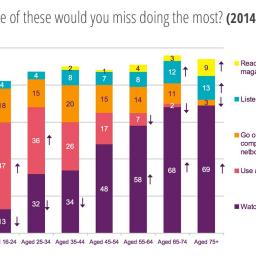Blogger: Newspapers Can't Succeed By Repackaging Old Goods
 Three months ago an internal strategy memo entitled The New York Times Innovation Report , detailing the challenges facing the NYT and its competitors in the digital age, appeared on the web; the leak was inevitable since the report was distributed to employees.
Three months ago an internal strategy memo entitled The New York Times Innovation Report , detailing the challenges facing the NYT and its competitors in the digital age, appeared on the web; the leak was inevitable since the report was distributed to employees.The report began with the statement 'The New York Times is winning at journalism. Of all the challenges... producing great journalism is the hardest.'
But then came the counterpoint: 'At the same time, we are falling behind in a second critical area: the art and science of getting our journalism to readers... we haven't done enough to crack that code in the digital era.' It noted that in terms of digital traffic, the Times was falling behind both digital-focus journalism operations such as the Huffington Post and Vox Media (SB Nation, the Verge), as well as traditional competitors including the Washington Post (now owned by Amazon's Bezos) and the Wall Street Journal.
Media business blogger Thomas Baekdal has just posted his reaction to the report, challenging the assertion that the Times was 'winning at journalism' . While the individual stories appearing in the Times may meet high standards of reporting and editing, what if the problem was that readers didn't find the stories relevant to their lives?
Baekdal compares the Times and other newspapers to supermarkets like Wal-Mart, which market huge arrays of products, of which only a small percentage has relevance to any given shopper. While Baekdal acknowledges that Amazon and others have succeeded with supermarket models on the web, they generally do so by using search as entry points into targeted delivery ('Customers who browsed this item also were interested in...'). Another successful model is the community of interest model from social networking; people return each day to read or view a stream of content on topics, or from authors, that matter to them.
[2014-06-16 08:59UTC Minor formatting edits for readability.]